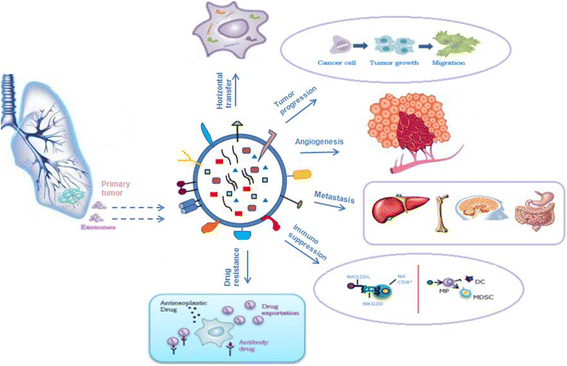Role of exosomal proteins in cancer diagnosis
- PMID: 28851367
- PMCID: PMC5576100
- DOI: 10.1186/s12943-017-0706-8
Role of exosomal proteins in cancer diagnosis
Abstract
Exosomes are emerging as a new type of cancer biomarkers. Exosome is a bilayered nano-sized vesicle secreted by various living cells in all body fluids. Based on the expanding albeit incomplete knowledge of their biogenesis, secretion by cells and cancer cell-specific molecular and genetic contents, exosomes are viewed as promising, clinically-relevant surrogates of cancer progression and response to therapy. Preliminary proteomic, genetic and functional profiling of cancer cell-derived or cancer plasma-derived exosomes confirms their unique characteristics. Alterations in protein or nucleic acid profiles of exosomes in plasma correlate with pathological processes of many diseases including cancer. However, previous studies on exosome application in cancer diagnosis and treatment mainly focussed on miRNAs. With the development of rapid large-scale production, purification, extraction and screening of exosomal contents, exosomal protein application can be explored for early stage cancer diagnosis, monitoring and prognosis evaluation. Here, we summarized the recent developments in application of exosomal proteins for cancer diagnosis.
Keywords: Biomarker; Cancer; Diagnose; Exosome.
Conflict of interest statement
Competing interests
The authors declare that they have no competing interests.
Publisher’s Note
Springer Nature remains neutral with regard to jurisdictional claims in published maps and institutional affiliations.
Figures




References
-
- Johnstone RM, Bianchini A, Teng K. Reticulocyte maturation and exosome release: transferrin receptor containing exosomes shows multiple plasma membrane functions. Blood. 1989;74:1844–1851. - PubMed
Publication types
MeSH terms
Substances
LinkOut - more resources
Full Text Sources
Other Literature Sources

